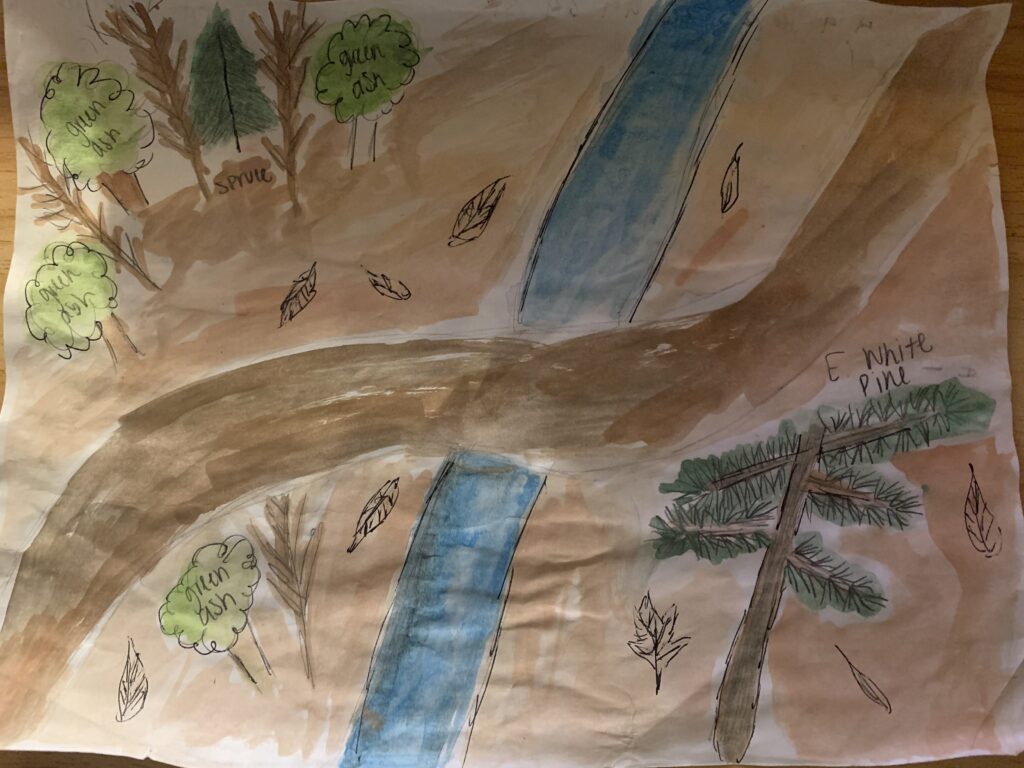As I sat in Centennial Woods observing the phenology of my area, I observed the changing of the leaves on focal tree species. From my observations trees such as Green Ash, Box Elder, and Buckthorn had completely lost their leaves. I instantly observed what trees had lost their leaves as the forest floor had become covered in leaves. Although these trees had shredded their leaves, the conifers (Eastern White Pine, and Northern White Cedars) of the forest remained fully bloomed. After considering how many leaves covered the floor, I was left with a research question: How does the covering of leaves affect species’ habitat beneath the soil. After researching this question, I found that fallen leaves act as a source of organic material as they decompose, according to the USDA.
Along with my observations about the phenology of the trees, I observed the marsh area behind the stream as well. The field that was once filled with wildflowers and high grasses, was now an area of muddy waters. The absence of greenery in the field-induced the lack of bees and other insects I have previously observed. The stream lacked the presence of macroinvertebrates as well.
